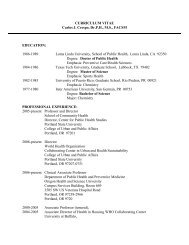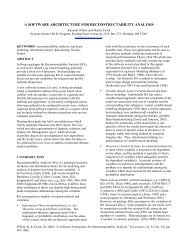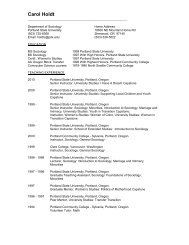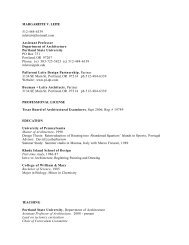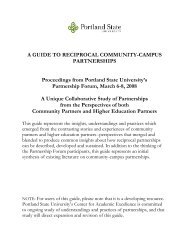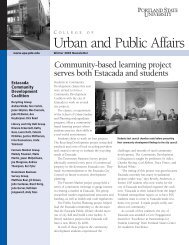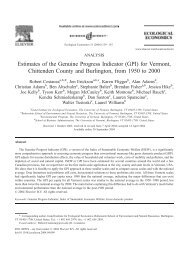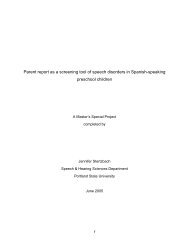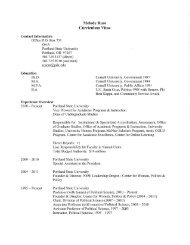Effects of integral stimulation therapy on speech - Portland State ...
Effects of integral stimulation therapy on speech - Portland State ...
Effects of integral stimulation therapy on speech - Portland State ...
You also want an ePaper? Increase the reach of your titles
YUMPU automatically turns print PDFs into web optimized ePapers that Google loves.
simultaneously with the child, provided an imitative model for the child, pointed to the<br />
printed word under the stimulus picture, mouthed the /s/ blend sounds, or provided any<br />
combinati<strong>on</strong> <str<strong>on</strong>g>of</str<strong>on</strong>g> mirrors and other supportive visuals for the child.<br />
The child was given specific feedback in resp<strong>on</strong>se to his correct and incorrect<br />
producti<strong>on</strong>s <str<strong>on</strong>g>of</str<strong>on</strong>g> target sounds (extrinsic feedback). Feedback such as “I heard the /s/ sound<br />
but not the /n/. Let’s try again with both sounds.” Clinician gave the child pictures <str<strong>on</strong>g>of</str<strong>on</strong>g> /s/<br />
and /n/ with oral placements and letters below to stick <strong>on</strong> a mirror. The child ordered the<br />
cards mouthing each /s/ and /n/ oral placement as pictured. The clinician and the child<br />
repeatedly practiced the sound simultaneously, <str<strong>on</strong>g>of</str<strong>on</strong>g>ten lengthening the sounds for<br />
emphasis. They m<strong>on</strong>itored their own oral placements in the mirror until the sound could<br />
be produced correctly and c<strong>on</strong>sistently. The clinician gave the child feedback as to the<br />
accuracy <str<strong>on</strong>g>of</str<strong>on</strong>g> his producti<strong>on</strong>, and also provided the child with specific feedback so that he<br />
could make the minute adjustments needed for improved producti<strong>on</strong>s. This feedback is at<br />
the core <str<strong>on</strong>g>of</str<strong>on</strong>g> what makes <str<strong>on</strong>g>integral</str<strong>on</strong>g> <str<strong>on</strong>g>stimulati<strong>on</strong></str<strong>on</strong>g> so effective. Individuals with motor <strong>speech</strong><br />
disorders are first given the tools to m<strong>on</strong>itor specific <strong>speech</strong> movements by way <str<strong>on</strong>g>of</str<strong>on</strong>g><br />
clinician feedback. As they become more pr<str<strong>on</strong>g>of</str<strong>on</strong>g>icient with their sound producti<strong>on</strong>s, they<br />
begin to develop the skills needed to m<strong>on</strong>itor their own <strong>speech</strong> producti<strong>on</strong>s.<br />
The child was encouraged to develop familiarity with how a particular target<br />
feels, looks, and sounds (intrinsic feedback). Tactile feedback included questi<strong>on</strong>s such as:<br />
Does it create wind when it flows out <str<strong>on</strong>g>of</str<strong>on</strong>g> the mouth (putting hands in fr<strong>on</strong>t <str<strong>on</strong>g>of</str<strong>on</strong>g> clinician’s<br />
and child’s mouth to feel air flow)? Is it voiced or unvoiced (feeling for vibrati<strong>on</strong>s <str<strong>on</strong>g>of</str<strong>on</strong>g><br />
voiced sounds <strong>on</strong> the throat for differentiating /v/ from /f/ sounds)? Can the child feel his<br />
t<strong>on</strong>gue touching his upper teeth when attempting the “th” sound?<br />
46



